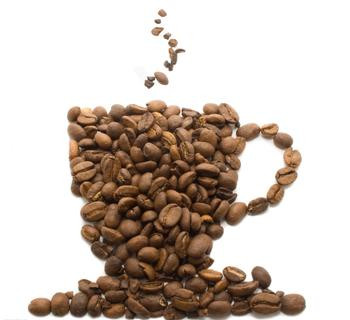How to choose instant coffee the selection and purchase method of coffee beans
Coffee, cocoa and tea are listed as the three major drinks in the world. Coffee originated in Africa, for Rubiaceae, shrub, coffee tree fruit seeds, semicircle with grooves, fried into coffee powder. Brown has a special aroma, coffee powder can be drunk after boiling, such as the juice will be concentrated and then dried into instant coffee. When buying coffee, you should pay attention to the following points:

(1) choose and buy different brands according to your taste
Different brands of coffee have different qualities and tastes. For example, McCoffee and Nestle coffee are specific mixed products, and they are made with different varieties of coffee beans, roasting methods and finished formulations, so they have different flavors.
(2) choose a good package
Coffee is easy to taste and change the taste of the drink, sealed cans and vacuum packaging can better preserve the original quality of coffee, while paper bags and unsealed bags will affect the inherent quality of coffee.
(3) choose fragrant coffee
Fake and shoddy coffee is mixed with chicory root powder in real coffee, or roasted and crushed grains and beans. Real coffee contains caffeine and has a special aroma. Poor-quality coffee is generally out of date or lax sealing caused by moisture caused by caking, obvious changes in aroma and taste, often the aroma disappears, drinking has a peculiar smell. And those who grind coffee and pass it off as instant coffee. The identification method is that instant coffee dissolves immediately after brewing, without floating and dregs, while although the coffee powder is ground very fine, there are floating matter and sediment after brewing, which can not be swallowed and can only be blown and drunk. It is also common to alter the shelf life of instant coffee packaging. The shelf life of instant coffee is generally 1 year; attention should be paid to identification when buying.
(4) buy the right amount.
Coffee is not resistant to storage. Once the coffee container is opened and exposed to the air, essential oils such as coffee alcohols will gradually disappear and unsaturated oils will gradually oxidize. If coffee stays in the air for too long, it will lose its inherent fragrance.
Selection and purchase of coffee beans
The judgment at the time of pawn
The easiest way to make delicious coffee is to sigh the filter paper. When brewing, there is also a way to judge whether the coffee is delicious, that is, when it is in hot water, the powder is not inflated, and when the coffee is fully roasted and extracted water, there will be beautiful and meticulous foam puffing up.
Judgment after pawn
Although the concentration of coffee will change due to different roasting degree and extraction method, the characteristic of delicious coffee is that the coffee liquid extracted by the pawn is clear under the same conditions. The spoon can be clearly seen through the stroke fluid in the picture below, while the one in the stone picture is almost invisible. It is difficult to tell whether a cup of coffee is delicious, but if you compare it, you can see whether the coffee is delicious or not. even after 30 minutes, the color of a delicious cup of coffee is still clear and the taste will not change.
Judging from the taste and aroma of coffee
The sour taste of delicious coffee is as refreshing as citrus fruit, without strong sour taste. Bitterness is a soft bitterness. There is no bitterness like cigarette or scorch.
Judging from the quality of raw beans
The shape, grinding stage, stroke, post-stroke, taste and flavor stages have been discussed before, as the focus of judging whether the coffee is delicious or not, but these are all for completely roasted coffee beans. Raw beans are green before roasting, commonly known as [Green]. If the quality of raw beans is poor, no matter how hard you cook them, you will not be able to brew beautiful coffee. Raw beans are usually exported from the place of origin two months after harvest, and this year's crop is called New Crop. After a year, it's called Past Crop. After a longer period of time, it is called Old Crop. Coffee beans are crops, and their freshness will naturally affect their taste. Fresh raw beans can enjoy the distinct characteristics and vibrant flavor of each variety. Take rice as an example, if it is placed for a long time, its original flavor will be diluted with the loss of water. Fresh raw beans, showing a bright green color, can be easily distinguished. Except for freshness. No matter what kind of variety, we should also try to choose raw beans with large particles and no color spots.
Important Notice :
前街咖啡 FrontStreet Coffee has moved to new addredd:
FrontStreet Coffee Address: 315,Donghua East Road,GuangZhou
Tel:020 38364473
- Prev

Four aspects that should be paid attention to in selecting coffee beans
When buying coffee, you should pay attention to its freshness, aroma and whether it is stale or not, and the ideal purchase quantity is to be able to drink it in half a month. Here are four aspects that should be paid attention to in selecting coffee beans: 1. When buying, pay attention to whether the color of the beans and the size of the particles are the same. Good coffee beans are shiny and have a strong aroma without being mixed with peculiar smell. No matter what kind of coffee beans
- Next

The basic knowledge of buying Coffee beans
The easiest way to judge the delicious coffee at the time of pawn is to sigh the filter paper.
Related
- Beginners will see the "Coffee pull flower" guide!
- What is the difference between ice blog purified milk and ordinary milk coffee?
- Why is the Philippines the largest producer of crops in Liberia?
- For coffee extraction, should the fine powder be retained?
- How does extracted espresso fill pressed powder? How much strength does it take to press the powder?
- How to make jasmine cold extract coffee? Is the jasmine + latte good?
- Will this little toy really make the coffee taste better? How does Lily Drip affect coffee extraction?
- Will the action of slapping the filter cup also affect coffee extraction?
- What's the difference between powder-to-water ratio and powder-to-liquid ratio?
- What is the Ethiopian local species? What does it have to do with Heirloom native species?

